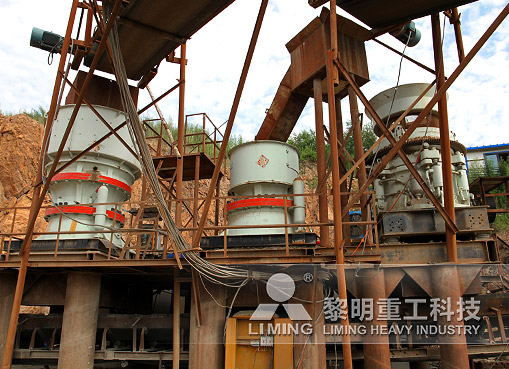Introduction
Limestone is one of the most widely used raw materials in the aggregate and construction industries. From concrete and asphalt to cement production, efficient limestone crushing solutions play a critical role in ensuring stable supply and consistent product quality.
However, achieving high capacity and low operating cost in limestone crushing requires more than just powerful equipment. A well-matched crushing process and properly selected machines are essential for long-term success.
Based on extensive global project experience, LIMING Heavy Industry provides optimized limestone crushing solutions designed for high-capacity aggregate production.
1. Characteristics of Limestone in Crushing Applications
Limestone is generally considered a medium-soft material, but its actual crushing behavior depends on several factors:
Compressive strength variations
Moisture and clay content
Abrasiveness and impurities
Required final aggregate sizes
Although limestone is easier to crush than granite or basalt, improper equipment selection can still lead to excessive fines, unstable output, and high wear costs.
Understanding material characteristics is the first step toward an efficient limestone crushing solution.
2. Typical Limestone Crushing Process Configuration
Primary Crushing: Jaw Crusher
Jaw crushers are widely used as primary crushers in limestone applications due to their:
Large feed opening
Strong crushing force
Stable and reliable operation
They effectively reduce large limestone blocks into manageable sizes for secondary processing.
Secondary Crushing: Impact Crusher or Cone Crusher
Depending on production requirements, limestone secondary crushing can be configured in two main ways:
Impact Crusher
Excellent particle shape
High reduction ratio
Ideal for construction aggregates
Cone Crusher
Higher capacity
Lower wear cost
Suitable for continuous, large-scale production
LIMING Heavy Industry selects secondary crushers based on capacity demand, product shape requirements, and operating cost targets.
Screening and Closed-Circuit System
Vibrating screens are used to:
Classify crushed limestone by size
Return oversize material for further crushing
Ensure consistent final aggregate gradation
Closed-circuit systems significantly improve product quality and reduce unnecessary re-crushing.
3. Limestone Crushing Solutions by Capacity
Medium-Capacity Plants (200–400 TPH)
Typical configuration:
Jaw crusher
Impact crusher
Vibrating screen
Applications:
Local aggregate supply
Small to medium quarry operations
High-Capacity Plants (500–1000+ TPH)
Typical configuration:
Jaw crusher
Cone crusher (secondary & tertiary)
Multi-deck vibrating screens
Applications:
Large-scale quarrying
Cement plant aggregate supply
Infrastructure projects
These systems are designed for continuous operation, high efficiency, and long service life.
4. How to Improve Aggregate Quality in Limestone Crushing
Key optimization strategies include:
Pre-screening to remove natural fines
Proper crusher chamber selection
Optimized closed-circuit settings
Balanced feed distribution
When combined, these measures significantly improve aggregate shape, strength, and consistency.
5. Operating Cost Control in Limestone Crushing Plants
Cost control is a major concern for aggregate producers. Effective limestone crushing solutions help reduce costs by:
Lowering energy consumption per ton
Extending wear parts lifespan
Reducing maintenance downtime
Improving finished product yield
Engineering-based system design ensures that equipment operates within optimal parameters.
6. LIMING Heavy Industry Limestone Crushing Solutions
With decades of experience, LIMING Heavy Industry offers:
Customized process design
Complete crushing and screening systems
Reliable equipment for harsh conditions
Professional technical support
Each limestone crushing solution is tailored to project-specific requirements, ensuring long-term efficiency and profitability.
Conclusion
High-capacity limestone aggregate production requires more than powerful crushers. It demands a well-designed crushing and screening solution that balances capacity, quality, and operating costs.
By combining advanced equipment with proven engineering expertise, LIMING Heavy Industry delivers limestone crushing solutions that help customers achieve stable production and sustainable growth.














